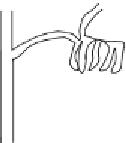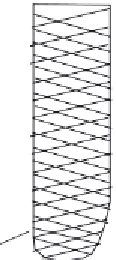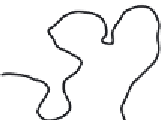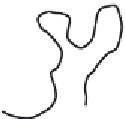Biology Reference
In-Depth Information
Proximal
tubules
Glomerular
capsule
To the Urinary
bladder
Glomerulus
Artery
Capillary
bed
Vein
Loop of
Henle
Figure 8.2
The nephron of the mammalian kidney. Reproduced from
LeBlanc (2010)
, Figure 9.1.
Reprinted with permission of John Wiley & Sons
.
RENAL FUNCTION
Overall Aspects
The kidneys are primarily organs of excretion, and elimination by the kidney accounts
for most by-products of normal body metabolism. They are also the primary organs
for the excretion of polar xenobiotics and polar metabolites of lipophilic xenobiotics.
Useful descriptions of kidney structure and function have recently been published by
Tarloff and Wallace (2008, 2010)
and
LeBlanc (2010)
. The functional unit of the kid-
ney, the nephron, is shown in
Figure 8.2
.
Glomerular Filtration
Passive filtration of the blood plasma in the glomerulus, under the influence of the
blood pressure generated by the heart, is the initial step in urine formation. All mol-
ecules small enough to pass through the glomerular pores (70-100 Å) appear in the
ultrafiltrate; any molecule larger than these pores or bound to molecules larger than
these pores will not appear in the ultrafiltrate.
Tubular Reabsorption
Tubular reabsorption is the second major step in urine formation. Most of the reab-
sorption of solutes necessary for normal body function, such as amino acids, glucose,







































Search WWH ::

Custom Search